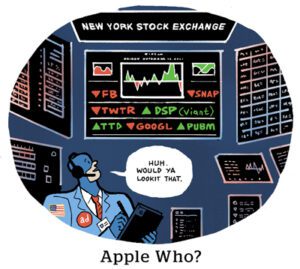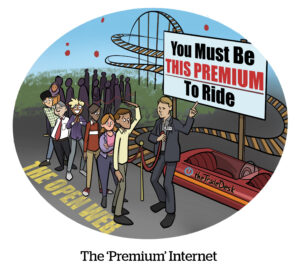A couple of years ago, I listened to a speech that affected me deeply and triggered serious self-reflection on my role as a digital marketer. The presentation, “The Decade of Delusion,” based on the book Advertising For Skeptics by Bob Hoffman, painted a compelling and alarming picture of digital advertising as a corrupt, wasteful, secretive and dangerous world.
Hoffman explained how technology can be used for good or ill. He detailed how, in the last 10+ years, despite its initial promise of democratizing the ability of brands to flourish, the advertising industry has instead immersed itself in scandals that have undermined consumer trust.
In recent months, this speech came back to me as I read about the made-for-advertising (MFA) and made-for-kids inventory scandals that have tainted many Fortune 500 brands. They’re not the first of such scandals, and I fear they won’t be the last.
It’s hard not to feel hypocritical, given that I’ve spent nearly the entirety of my professional career in this industry, on both the sell and buy side. At this point, I’m struggling to explain to my kids what I do for a living and how I can possibly feel proud of it.
Call it a professional crisis of conscience. I’ve started to wonder how I can contribute to healing this industry. I want to tell my children that I’m fighting back against the villains of the digital world, of which there are many – the same villains who are the reason my children can’t have mobile phones yet.
On this journey of professional self-reflection, I’ve encountered some media governance measures that advertisers can put in place to navigate the complexity of brand safety and gain better control of the quality of their media spend. These tools are shining a light on a much better direction for our industry.
Finding the path back to safety
Brand safety and suitability are measures taken to ensure ads do not appear in contexts that could harm the advertiser’s brand image or reputation. This is crucial in digital advertising, where ads can be placed across a wide array of websites and digital platforms, sometimes adjacent to inappropriate content.
A recent ANA report found that the typical programmatic ad campaign appears on 44,000 websites. That’s an astounding number of media outlets, which means a comprehensive media governance strategy is an essential part of the modern brand playbook.
There are two primary approaches to ensuring brand safety. First, there’s traditional monitoring through ad verification companies, which consists of a post-campaign measurement combined with a pre-bid capability that scans pages against a predetermined set of rules to ensure the ad destination is appropriate.
Ad verification companies, including Integral Ad Science (IAS), DoubleVerify and Moat by Oracle, ensure that ads are displayed in appropriate contexts and reach the intended audience effectively. They provide solutions for measuring viewability, ad effectiveness and fraud detection.
These companies focus mostly on detecting issues once they arise, either post-campaign activation or in-flight. By monitoring ad delivery on selected placements, they point to anomalies in ad performance in terms of viewability, invalid traffic (IVT) and other problematic issues. They help advertisers spot underperforming, fraudulent or brand-risky inventory.
Yet, even as ad verification vendors introduce new tools to increase the sophistication of media controls – i.e., supply-path optimization reports – they are not eradicating the problem because they look at events after they happen.
The emergence of proactive protection
Relying on ad verification as a brand safety strategy isn’t sufficient. To prevent brand safety issues and media waste, advertisers should look at the basics of media campaign setup in each media platform.
Digital advertising platforms such as Meta (Facebook, Instagram), Alphabet (DV360, YouTube, Google Ads), Amazon, The Trade Desk and others offer plenty of advanced, accessible and free-of-charge tools that can be employed even before campaigns start delivering.
Why aren’t these tools adequately protecting major global advertisers today? There’s a scale problem. Today’s advertisers are dealing with hundreds of thousands of ads across so many platforms, brands, regions, countries and agencies. Any manual review is lengthy, hard to coordinate and prone to delays and human mistakes.
This is where campaign setup governance technology can be transformative. The recent governance technology revolution means marketers can not only act upfront to protect their campaigns; they can also do it at scale and in near-real time. The landscape of solutions providing meaningful visibility to digital campaign setup is driven by industry innovators like Adfidence and in-house solutions developed by advertisers and media agencies for their own purposes.
Still, media governance tools are just an enabler. Alone, they are not enough to change the state of digital advertising.
The real revolution starts when advertisers decide to be more responsible with their media investments and play an active role in defining and overseeing the rules of the game. It’s time to step up. The tools are ready. Are advertisers?
“Data-Driven Thinking” is written by members of the media community and contains fresh ideas on the digital revolution in media.
Follow Teresa Fusaro and AdExchanger on LinkedIn.















